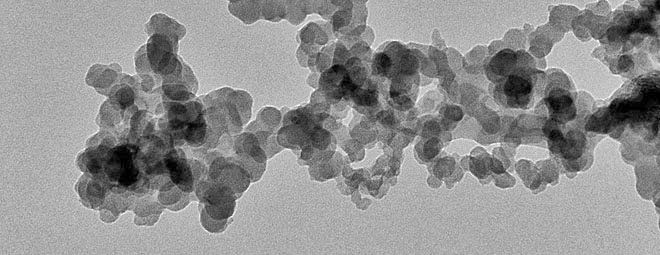Environmental Litigation
While a multitude of standard analysis protocols exist for addressing environmental issues, many cases involve questions that require analyses that fall outside the scope of EPA, OSHA and ASTM protocols. While we conduct analyses under these protocols when appropriate, we have had a great deal of success in adapting standard methods or developing customized approaches to address project specific questions. Such approaches typically rely upon detailed particle identification and/or microchemical analysis. A few application areas are discussed below in more detail:
Soot and Combustion Products
The identification and sourcing of soot and combustion products is typically performed using a range of analytical instrumentation including polarized light microscopy, scanning electron microscopy, transmission electron microscopy, and x-ray diffraction. These techniques have been used to identify dark deposits on properties and in the association (or dissociation) of fugitive dust to specific sources. Depending on the particulars of a case, the required analyses can range from particle identification to a detailed characterization of particle size, morphology, elemental composition, and chemistry. Chemical analysis of the volatile organic compounds adsorbed on the surface of aciniform carbon can provide further indicators of a deposit’s source.
Airborne Particulates
Airborne particles collected on filters can be identified to confirm or refute sources of contamination and causes of various problems such as darkening and unsightly deposits.
Industrial Byproducts
Byproducts and contamination resulting from industrial processes in or around factories or industrial settings can be obvious or subtle. Whether these contaminants are established or alleged, on surfaces, soil or liquids, a Microtrace analyst can provide factual information to assist the litigation process.
Asbestos
Microtrace scientists have been conducting high level asbestos analyses for decades. Materials ranging from talc deposits to brake pads to flooring and insulation (among many others) can contain regulated asbestos minerals. Microtrace maintains a full suite of instrumentation and reference materials so as to be able to provide an analysis tailored to the specific material of interest.
Natural Environmental Contamination
Contamination, deposits, and damage are commonly alleged to have occurred as a result of natural disasters. Whether it is soot from a wild fire, yellow rain (pollen), a mudslide, or mold spores, Microtrace is able to characterize, identify and often establish a source for the offending material.
How May We Help You?
Contact usto discuss your project in more detail.








